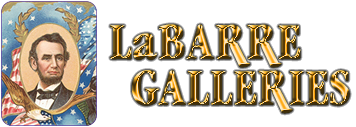Sterling Iron and Railway Co. - 1892-1909 dated Railroad Mining Stock Certificate
Inv# RS2791 StockStock printed by American Bank Note Co., NY. The Sterling Iron and Railway Company, located in Ramapo (Rockland County), New York, operated under various names from 1736 until 1923. Initial records suggest that the company was originally known as the Sterling Forge and Furnace Company. Its origins can be traced back to 1736 when Cornelius Board and Timothy Ward acquired 150 acres of the Sterling tract, establishing a bloomery and forge that produced the first iron at Sterling. Four years later, Board divested his stake in the company to Ward. Subsequently, the ownership of the ironworks appears to have been held by several individuals, including William Smith, James Burling, William Hawxhurst, and Abel Noble. The 1760s marked a significant period of growth for the ironworks, during which a variety of products were manufactured, including pig and bar iron, cart and wagon spindles, anchors, teakettles, skillets, pots, refined iron, and potash. However, the specific ownership during this era of expansion remains unclear.
The initial furnace at Sterling was established in 1751, and a year later, Abel Noble, along with his father William, built a forge adjacent to the furnace, where they produced their inaugural anchors in 1753. In October 1758, William Hawxhurst and Abel Noble formalized a partnership concerning iron manufacturing at Sterling, suggesting that both Noble and Hawxhurst likely held financial stakes in the enterprise. It was also during this period that the Townsend family first became involved with the Sterling Ironworks. Although historians debate the precise date of Peter Townsend's connection to Sterling, a ledger entry indicates that by February 1768, he was in partnership with Abel Noble.
From the conclusion of the Civil War until 1890, there exists a notable gap in the records of Sterling, leaving much of the ironworks' activities during this era undocumented. However, by 1890, it became apparent that the business was experiencing difficulties, leading to a reorganization in 1892. Macgrane Coxe was appointed president, but the economic downturn from 1892 to 1896 resulted in further decline and ongoing changes in the company's leadership. James D. Rowland from Philadelphia succeeded Coxe as president, followed by Theodore Price in 1905. H.A. Van Alstyne took over the company's leadership in 1911, maintaining that role until 1920. In 1918, all company assets were leased to Ramapo Ore Company. There was a brief resurgence of activity at Sterling during World War I, but operations ceased with the war's conclusion, and on July 1, 1923, all activities came to an end.
A stock certificate is issued by businesses, usually companies. A stock is part of the permanent finance of a business. Normally, they are never repaid, and the investor can recover his/her money only by selling to another investor. Most stocks, or also called shares, earn dividends, at the business's discretion, depending on how well it has traded. A stockholder or shareholder is a part-owner of the business that issued the stock certificates.











Ebay ID: labarre_galleries